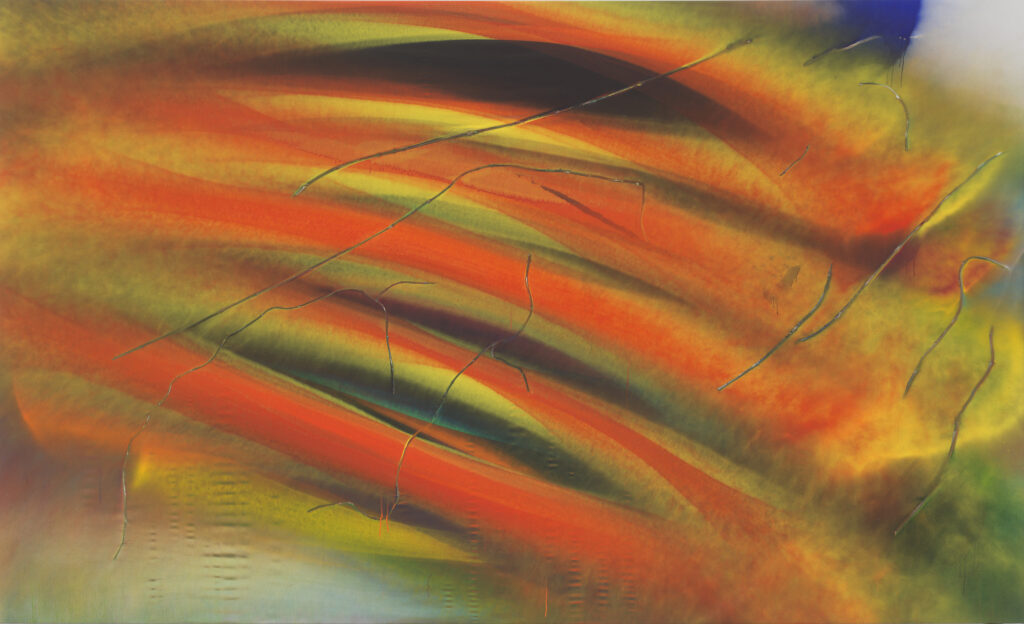
Colors erupt with visceral force. Layers of paint — blotches, streaks, swaths, drips and mists – build, collide, intertwine and vibrate. Fluid abstract forms and sweeping expansive movements embody notions of multiplicity and difference. Conventional boundaries and hierarchies are re-negotiated as if in territorial dispute.
In her studio practice and celebrated in situ works, Katharina Grosse explores and expands the physical properties, material presence, optical effects and aesthetic potentials of color and paint. Every canvas is both rigorously experimental and an organic fragment of something more expansive. This can be traced to her earliest works created at a time when the art world was dominated by male abstract painters. For Grosse, painting is a model of how to be and act in the world.
This fall, the Mildred Lane Kemper Art Museum at Washington University in St. Louis, in cooperation with the Kunstmuseum Bern, Switzerland, and the Kunstmuseum Bonn, Germany, will debut “Katharina Grosse Studio Paintings, 1988-2022: Returns, Revisions, Inventions.” The first major survey to focus on Grosse’s studio-based paintings, the exhibition will investigate the important role large-scale canvases have played throughout her career, from the late 1980s to the present day.
“Katharina Grosse is one of the most stimulating, creative and thoughtful painters working today,” said Sabine Eckmann, the William T. Kemper Director and chief curator at the Kemper Art Museum, who organized the exhibition in collaboration with the artist. “Her practice stretches the boundaries of painting in all directions. Yet, to date, her works on canvas have been relatively understudied. We are extremely honored to shine a light on this foundational aspect of her oeuvre, and to explore the visual formations through which she creates simultaneously structural openness, relentless mutability and the self-empowerment of painting through color.”
“Katharina Grosse Studio Paintings” will open at the Kemper Art Museum Sept. 23 and remain on view through Jan. 23, 2023. The exhibition then will travel to the Kunstmuseum Bern, opening in spring 2023, and to the Kunstmuseum Bonn, where it will open in spring 2024. Also in September, the Kemper Art Museum will release “Katharina Grosse Studio Paintings, 1988-2022: Returns, Revisions, Inventions,” the first in-depth study of Grosse’s works on canvas. Co-published with Hatje Cantz, this bilingual scholarly volume will feature scores of rarely seen works and documentary images, serving both as a record of the exhibitions and a reference book on this aspect of her career.
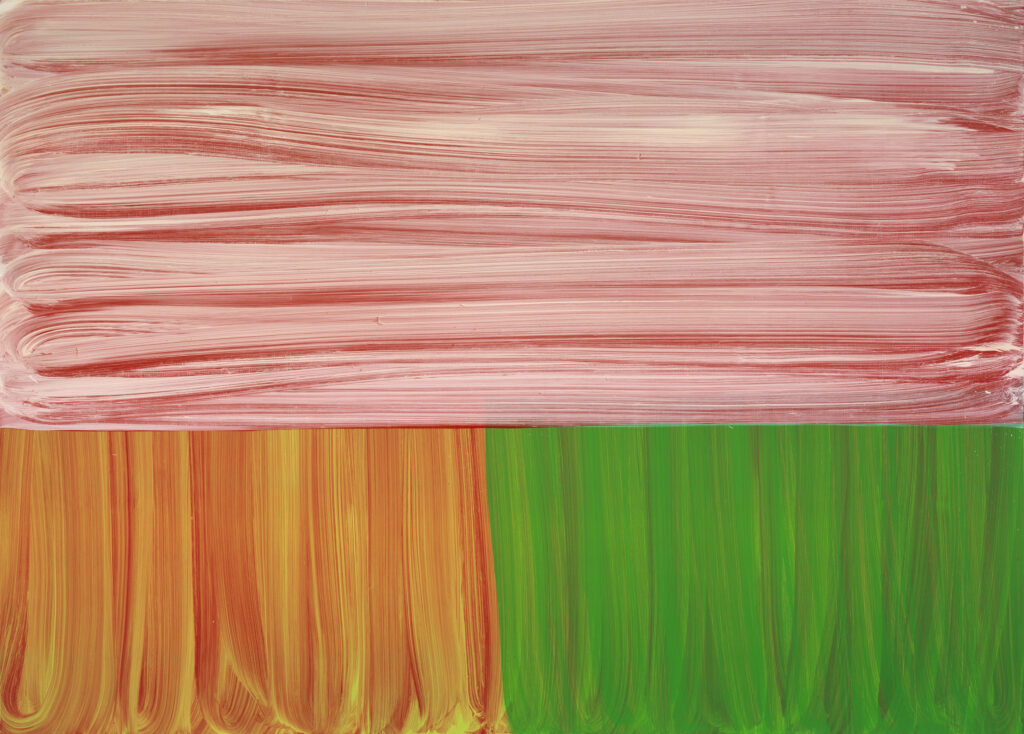
Revisions and ruptures
At the Kemper Art Museum, 37 large-scale canvases will be presented, organized into two thematic sections, each inspired by key elements of Grosse’s painterly method, as conceptualized by Eckmann. In addition, the exhibition will include an interactive installation of three new monumental fabric pieces commissioned from the artist.
The opening section, “Returns/Revisions/Inventions,” highlights the artist’s intuitive, process-based artistic practice. Colors, textures and shapes appear in flux as they emerge, then return on different canvases, only to transform yet again as new images. One early work from 1991, for example, features a wide band of pale pink-onto-orange that slashes across equivalently scaled layers of red, blue and yellow. In 2004, Grosse employed a similar composition, yet with movements more fluid, colors more modulated, and the interplay between painting and underpainting more complex.
Meanwhile, at a time when international gestural painting was largely dominated by male painters, Grosse’s use of spraying techniques, beginning in the late 1990s, contested the importance of direct connections to the artist’s hand — and thus the long-cherished link between painting and artistic subjectivity. At the same time, her approach to layering rather than mixing paint opened new chromatic possibilities and destabilized conventional hierarchies of figure and ground, above and below. For example, one 1998 canvas consists of soft, cloudlike blobs executed in a deep bluish green. A related work, from 1999, is marked by a similar scale and structure, but here the green floats atop subtle horizontal bands and is oversprayed with bright bursts of red.
“Through these ties of likeness and difference, an active, conscious and — importantly — indefinite spectatorial experience is mobilized,” Eckmann said. “Her work is perpetually changing and becoming, and continually encouraging an awareness of multiplicity.”
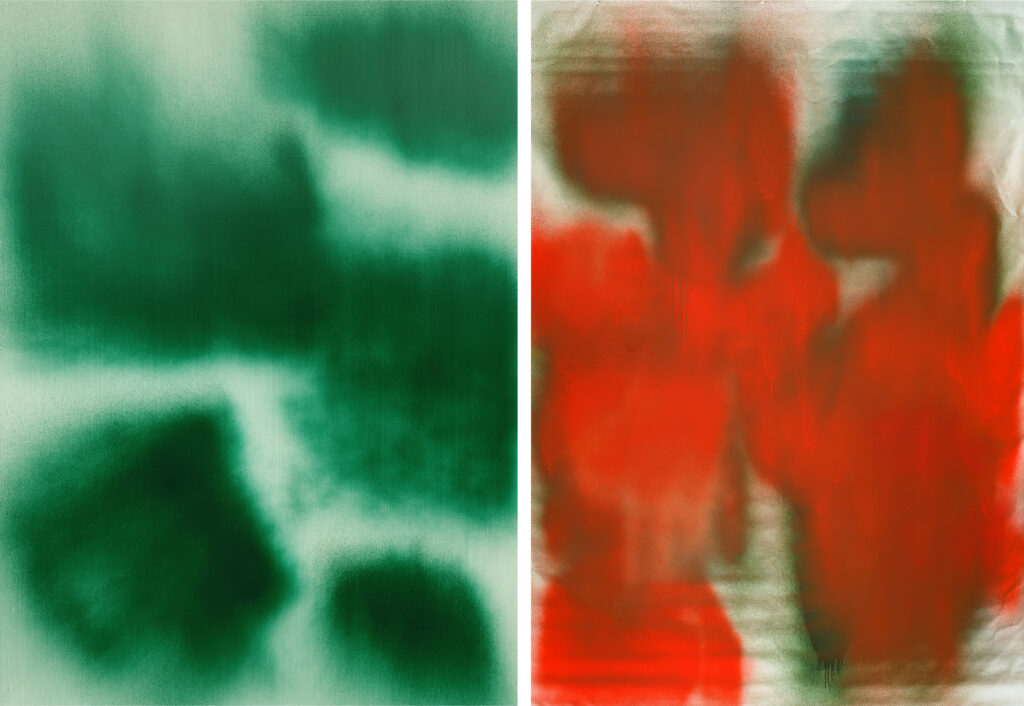
The second section, “Fissures/Ruptures,” emphasizes the various means through which Grosse interrogates the alleged autonomy of painting, stretching its boundaries and physical properties to connect with external spaces and social contexts. Since the early 2010s, Grosse has combined sprayers and stencils to produce spatial voids or gaps that paradoxically become active players on the visual field, testing the interplay between chance and control. Other works from the mid-2010s have expanded this process to create collagelike images of almost geological density. Compressed, fractured and destabilized, these paintings-within-paintings defy all sense of chronological order, their constituent layers and markings impossible to deconstruct.
More recently, Grosse has displaced the stencil with slashed canvases, thereby assimilating the actual wall of the museum into the work. At the same time, she has upended analogies between art and nature by adhering tree branches to the canvas and spray-painting over them. In some cases, the branches remain part of the final work; in others, Grosse removes the branches, leaving behind a visualization of their absence.
The exhibition also presents three new fabric pieces, which, echoing the performative nature of Grosse’s studio practice, feature digitally manipulated photographs that offer enlarged reproductions of unfinished paintings as well as of Grosse’s workspace and painting process. Printed on thin sheets of silk, these pieces will be hung in vertical layers from the 25-foot ceilings of the Kemper Art Museum’s Saligman Family Atrium, creating narrow pathways through which viewers can walk and experience both the assertive presence and environmental scale of Grosse’s work.
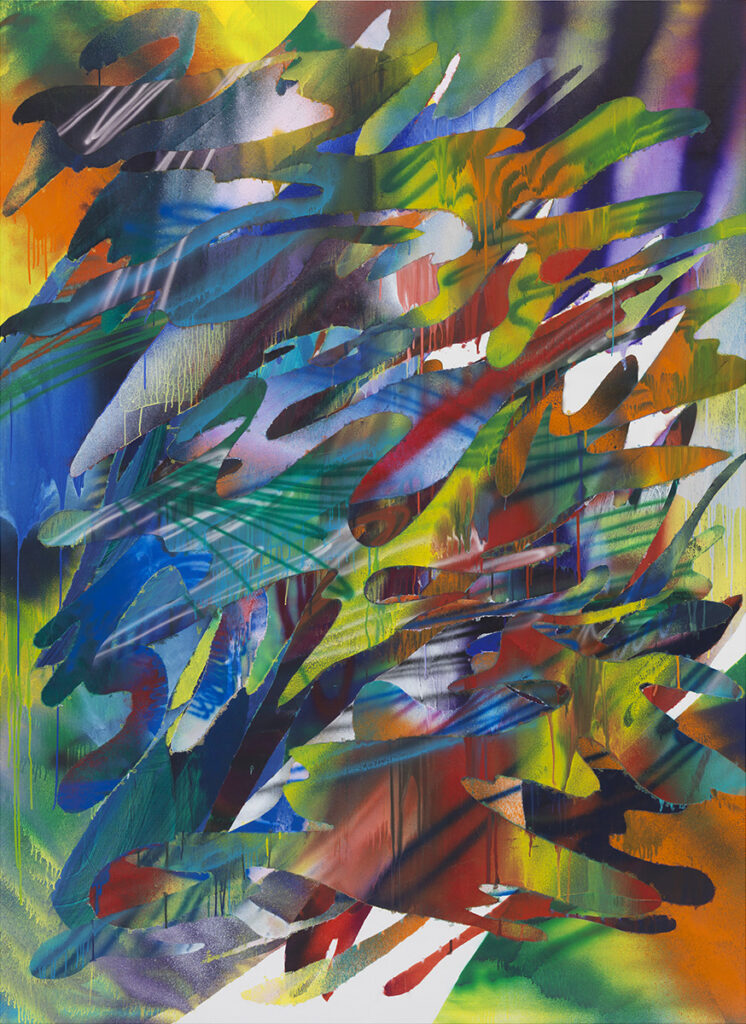
Publication and partners
Featuring text in both English and German, “Katharina Grosse Studio Paintings” will bring together for the first time 160 full-color plates as well as 38 supplemental images documenting Grosse’s studio practice over the last three decades. Also included will be an interview with the artist and five scholarly essays that together explore her intuitive, performative and noncategorical process, as well as the ways her paintings interlace with the everyday to create uncertainties.
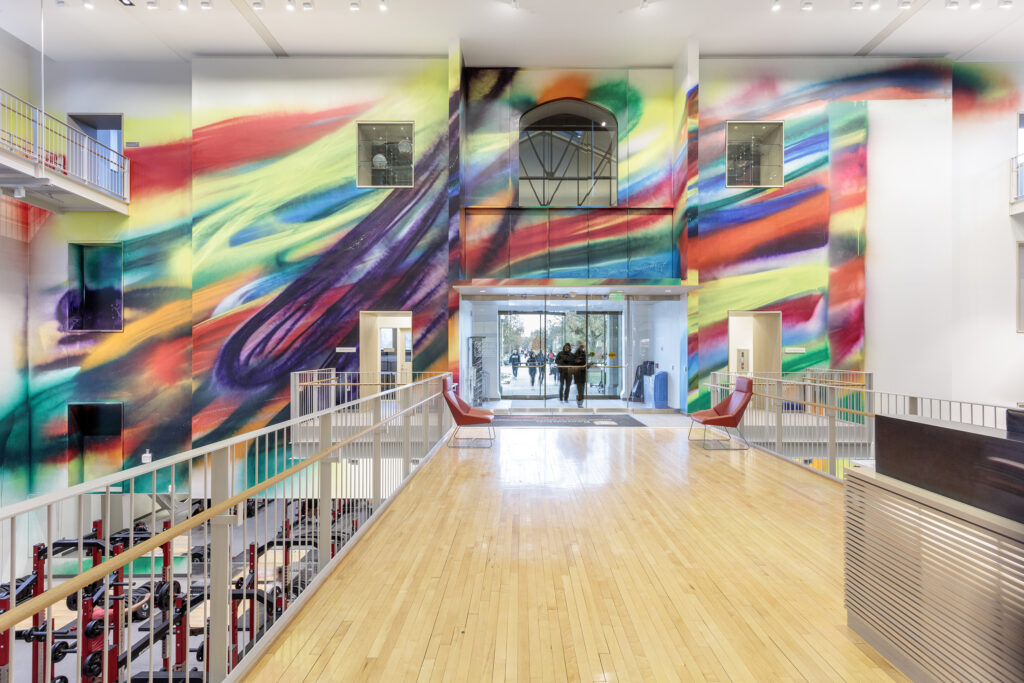
The Mildred Lane Kemper Art Museum, part of the Sam Fox School of Design & Visual Arts at Washington University in St. Louis, is among the nation’s leading university art museums. “Katharina Grosse Studio Paintings” will be Grosse’s second collaboration with the museum. In 2016, the Art on Campus program, in conjunction with the Kemper Art Museum, commissioned from the artist a wall-sized in situ painting in the Gary M. Sumers Recreation Center on the Danforth Campus.
The Kunstmuseum Bern is the oldest art museum in Switzerland. Its celebrated permanent collection houses works covering eight centuries, including early works by Grosse. Notably, in 1998, the Kunsthalle Bern hosted Grosse’s first sprayed in situ intervention.
The Kunstmuseum Bonn is one of Germany’s major museums of modern and contemporary art. Since the late 1990s, the museum has acquired a substantial collection of Grosse’s work, including “In Seven Days Time” (2011), a 30 x 64-foot outdoor commission that has become one of the museum’s signature pieces.
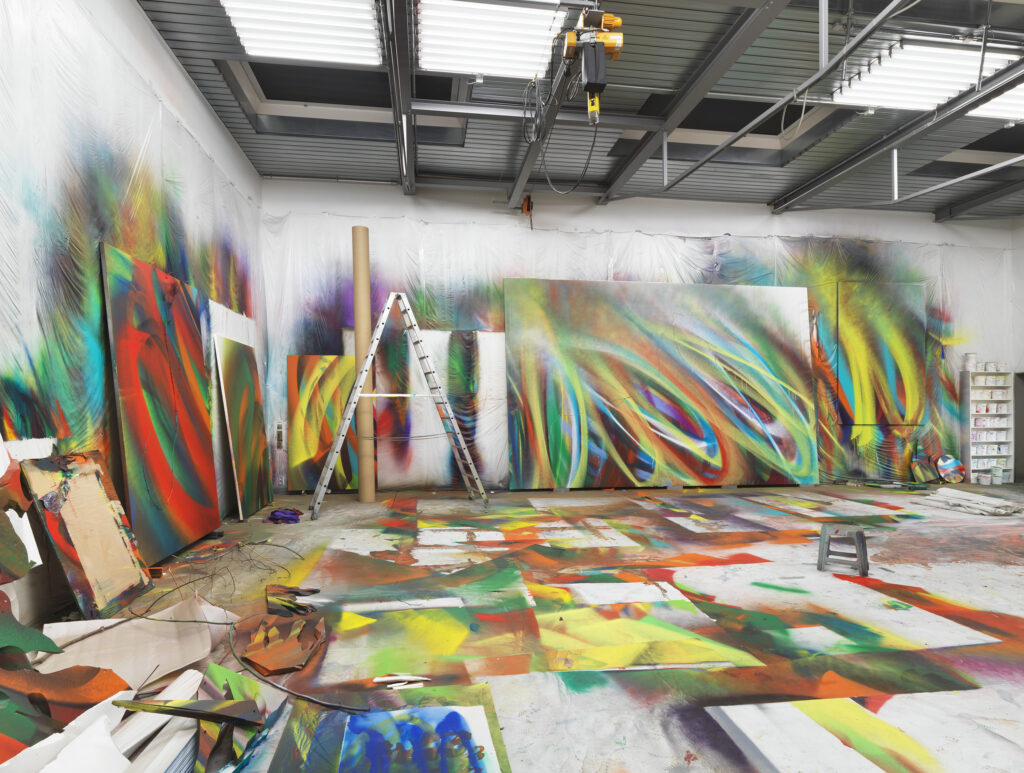
About the artist
Born in Freiburg im Breisgau, Germany, in 1961, Katharina Grosse has held professorships at Weißensee Kunsthochschule Berlin (2000–09) and Kunstakademie Düsseldorf (2010–18). Her many honors include the Oskar Schlemmer Prize (2014); the Fred Thieler Prize for Painting (2003); the Schmidt-Rottluff Scholarship (1993); and the Villa Romana Fellowship, Florence (1992). She currently serves as chairwoman of the board of KUNST-WERKE BERLIN e. V. She lives and works in Berlin and New Zealand.
Grosse’s work has been featured at major museums and galleries around the world. Recent exhibitions and on-site paintings include “Destroy Me Once, Destroy Me Twice” at the Roskilde Festival, “Splinter” at Fondation Louis Vuitton, Paris, and “Apollo, Apollo” at Espace Louis Vuitton, Venice (all 2022) as well as “Chill Seeping from the Walls Gets between Us” at HAM Helsinki Art Museum (2021); “Shutter Splinter” at Helsinki Biennial (2021); “Is It You?” at Baltimore Museum of Art (2020); “It Wasn’t Us” at Hamburger Bahnhof–Museum für Gegenwart–Berlin (2020); and the two-person show “Mural: Jackson Pollock | Katharina Grosse” at Museum of Fine Arts, Boston (2019).
In addition to the Kemper Art Museum, Kunstmuseum Bern and Kunstmuseum Bonn, her work is included in the collections of: Albertina, Vienna; Albright-Knox Art Gallery, Buffalo; ARKEN Museum for Moderne Kunst, Copenhagen; Centre Pompidou, Paris; Istanbul Modern; K21–Kunstsammlung Nordrhein-Westfalen, Düsseldorf; Kunsthaus Zürich; Lenbachhaus, Munich; Magasin III, Stockholm; MARe–Muzeul de Artă Recentă, Bucharest; MAXXI–Museo nazionale delle arti del XXI secolo, Rome; Milwaukee Art Museum; Museum Azman, Jakarta; Museum of Modern Art, New York; Nasher Sculpture Center, Dallas; Pérez Art Museum Miami; Queensland Art Gallery & Gallery of Modern Art (QAGOMA), Brisbane; Saarland Museum–Moderne Galerie, Saarbrücken; Serralves Museum of Contemporary Art, Porto; and Staatliche Museen zu Berlin, among many others.
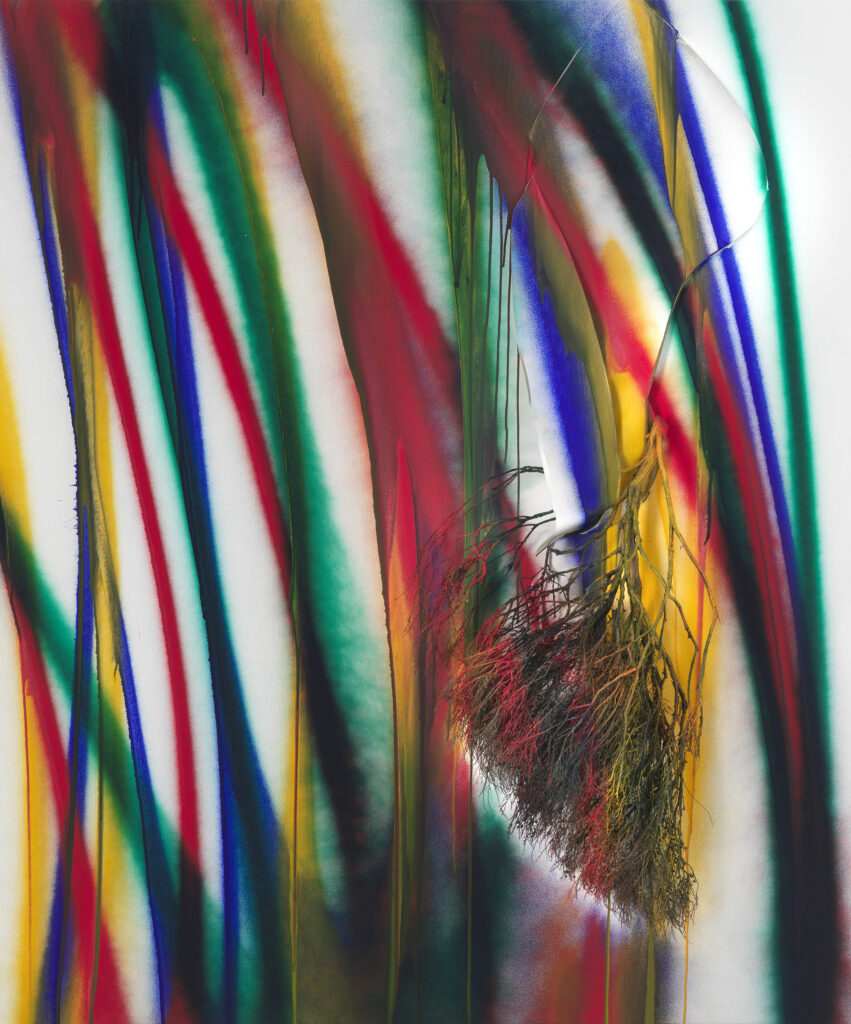
Visitor information
“Katharina Grosse Studio Paintings, 1988-2022: Returns, Revisions, Inventions” will open at the Kemper Art Museum on Friday, Sept. 23, with a Q&A with the artist, followed by a reception. The exhibition will remain on view through Jan. 23, 2023.
The Kemper Art Museum is located on Washington University’s Danforth Campus, near the intersection of Skinker and Lindell boulevards. Visitor parking is available in the Washington University’s East End Garage, which can be entered from Forsyth Boulevard or Forest Park Parkway.
Regular hours are 11 a.m. to 5 p.m. Mondays and Wednesdays through Sundays. The museum is closed Tuesdays. For more information, including current COVID-19 precautions, call 314-935-4523 or visit kemperartmuseum.wustl.edu. Follow the museum on Facebook, Instagram and Twitter.
Support
This publication and the exhibition at the Mildred Lane Kemper Art Museum were made possible by the leadership support of the William T. Kemper Foundation.
All exhibitions are supported by members of the Director’s Circle, with major annual support provided by Emily and Teddy Greenspan and additional generous annual support from Michael Forman and Jennifer Rice, Julie Kemper Foyer, Joanne Gold and Andrew Stern, Ron and Pamela Mass, and Kim and Bruce Olson.
Further support is provided by Gagosian; Galerie nächst St. Stephan Rosemarie Schwarzwälder, Vienna; public funds from the Missouri Arts Council, a state agency; the Hortense Lewin Art Fund; the Ken and Nancy Kranzberg Fund; and members of the Mildred Lane Kemper Art Museum.
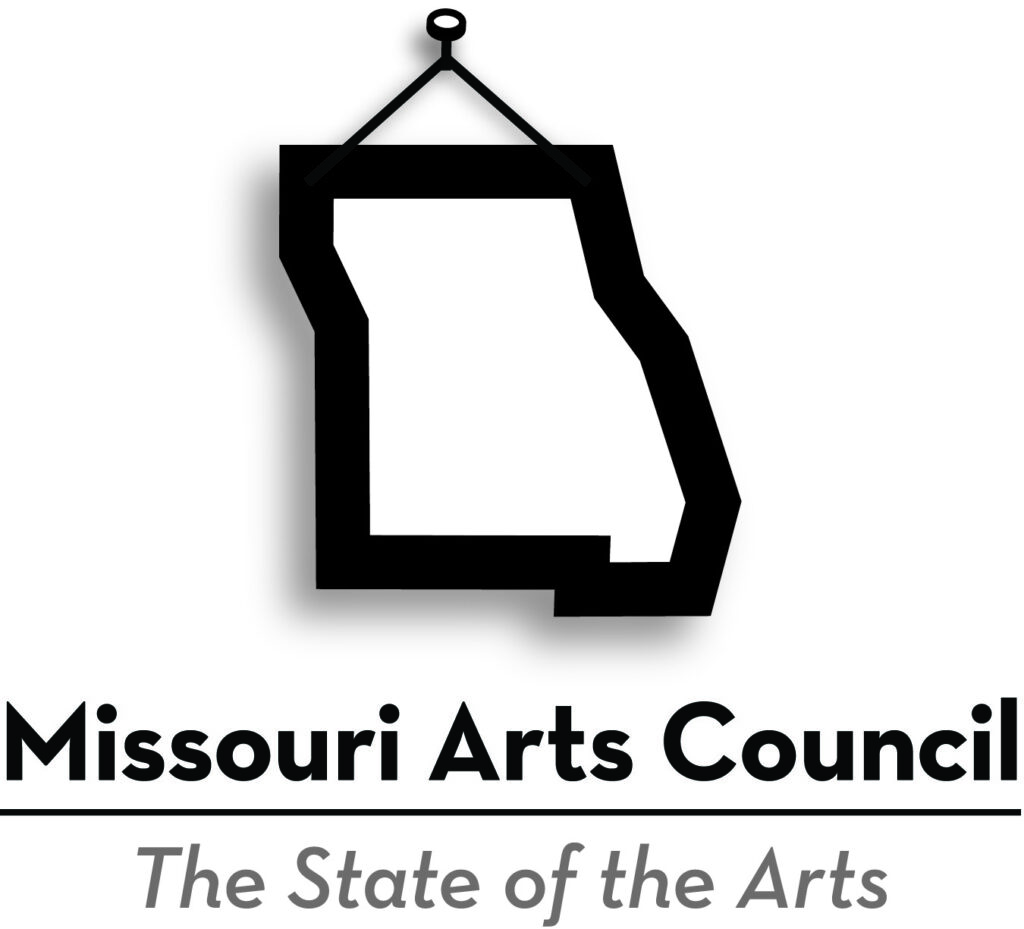
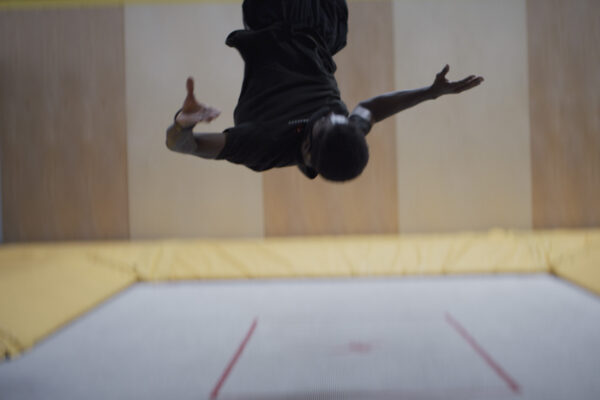
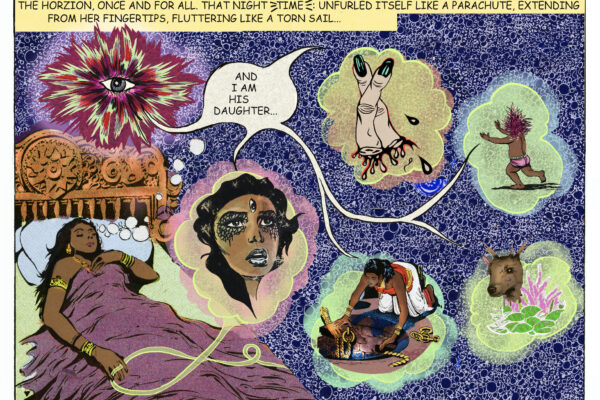
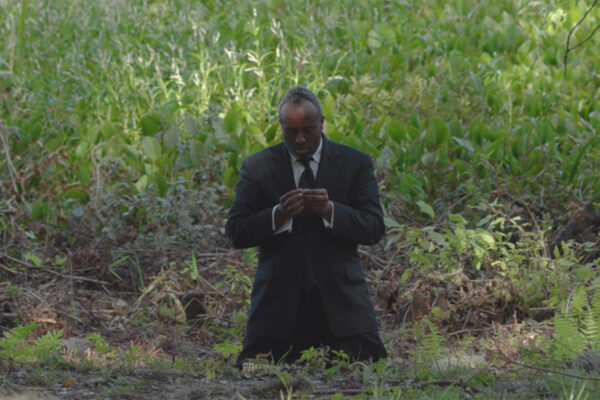
Comments and respectful dialogue are encouraged, but content will be moderated. Please, no personal attacks, obscenity or profanity, selling of commercial products, or endorsements of political candidates or positions. We reserve the right to remove any inappropriate comments. We also cannot address individual medical concerns or provide medical advice in this forum.